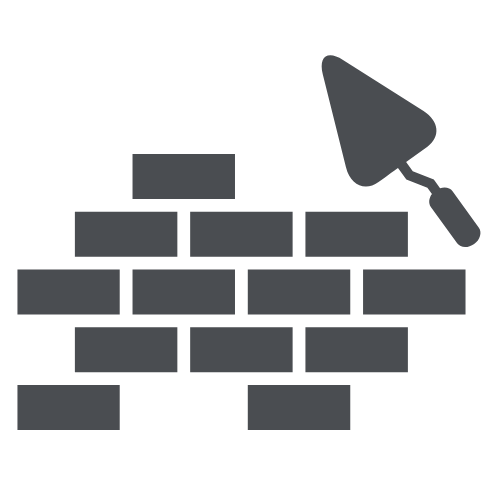A chimney is an essential structure in homes with fireplaces, wood stoves, or heating systems that burn fossil fuels. It plays a crucial role in maintaining indoor air quality and ensuring the safe operation of these heating appliances. In this blog post, we’ll break down the parts of a chimney and explore their uses and functions.
The Parts of a Chimney
- Chimney Cap
- Description: The chimney cap is a protective cover that sits on top of the chimney.
- Uses: It prevents rain, snow, debris, and animals from entering the chimney, and also helps prevent downdrafts.
- Flue
- Description: The flue is the vertical passageway inside the chimney that allows smoke and combustion gases to exit the home.
- Uses: It ensures that harmful gases such as carbon monoxide are safely vented outside. The flue can be lined with clay tiles or metal liners to protect the chimney walls from heat and corrosion.
- Flue Liner
- Description: Flue liners are materials, typically made of clay, ceramic, or metal, that line the inside of the flue.
- Uses: They provide a smooth passageway for smoke and gases, protect the chimney walls from heat and corrosion, and improve the chimney’s efficiency.
- Chimney Crown
- Description: The chimney crown is the top part of the chimney, typically made of concrete, that covers and seals the top opening around the flue.
- Uses: It prevents water from entering the chimney structure and causing damage. A well-constructed crown slopes away from the flue to direct water away from the chimney.
- Smoke Chamber
- Description: The smoke chamber is located directly above the fireplace and below the flue.
- Uses: It compresses and funnels the smoke and gases from the firebox into the flue. The smoke chamber is designed to create a smooth transition for the smoke and gases, reducing turbulence and promoting efficient venting.
- Smoke Shelf
- Description: The smoke shelf is a flat area behind the damper and below the smoke chamber.
- Uses: It helps to catch and hold any debris or moisture that falls down the chimney, preventing it from entering the firebox.
- Damper
- Description: The damper is a movable plate located inside the chimney, usually just above the firebox.
- Uses: It controls the airflow and can be opened or closed. When open, it allows smoke and gases to exit through the flue. When closed, it prevents cold air from entering the home when the fireplace is not in use.
- Firebox
- Description: The firebox is the part of the fireplace where the fire burns.
- Uses: It contains the fire and directs heat into the room. The firebox is typically made of firebrick or refractory materials that can withstand high temperatures.
- Ash Dump
- Description: The ash dump is a small trapdoor located at the bottom of the firebox.
- Uses: It allows for easy removal of ashes from the firebox into an ash pit below.
- Chimney Stack
- Description: The chimney stack is the visible portion of the chimney that extends above the roofline.
- Uses: It provides the height necessary for proper draft and helps to vent smoke and gases away from the home. The stack is often built with brick or stone for durability and aesthetic appeal.
The Uses of a Chimney
- Ventilation: The primary function of a chimney is to vent smoke, gases, and other byproducts of combustion out of the home, ensuring indoor air remains clean and safe.
- Temperature Regulation: A chimney helps regulate the temperature in a home by allowing heat from a fireplace or stove to circulate.
- Energy Efficiency: Properly functioning chimneys improve the efficiency of heating systems by ensuring a good draft, which helps the fire burn more efficiently.
- Structural Support: In many homes, the chimney also provides structural support, especially in older buildings where it may form part of the main framework.
Maintaining Your Chimney
To keep your chimney in good working order, regular maintenance is essential. This includes:
- Annual Inspections: Have your chimney inspected by a certified professional at least once a year to check for blockages, damage, or buildup of creosote, a flammable byproduct of burning wood.
- Regular Cleaning: Chimneys should be cleaned regularly to remove creosote and other debris, which can cause chimney fires if allowed to accumulate.
- Repairing Damage: Address any cracks, leaks, or damage promptly to prevent further deterioration and ensure the chimney functions correctly.
Understanding the parts and functions of your chimney can help you maintain it properly and ensure it operates safely and efficiently. Whether you’re using your chimney for a cozy fireplace or a heating system, keeping it in top condition is key to enjoying its benefits fully.

